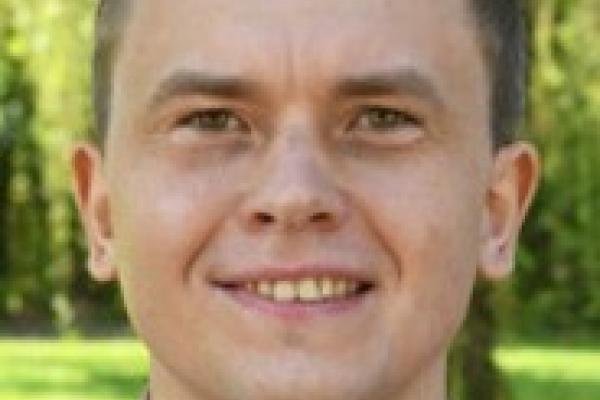
Synchrotron infrared radiations are finding applications in diverse fields ranging from biology to material science due to their broad bandwidth and high coherence [1,2]. The spectral region spanning 500–5000 cm- 1 is of particular interests for chemical identification, since most organic molecules exhibit characteristic fundamental vibrational absorptions in this window. Here we present a table-top system that can simultaneously cover a significant part of this ‘finger-print’ region at 24 mW-level average power and, thus, can potentially constitute or replace an infrared synchrotron beamline [3]. The system is based on the first high power Ho:YAG thin-disk laser providing 220 fs pulses at 2 µm wavelength with 18.7 W average power and 77 MHz repetition rate. The output is then coupled into a photonic-crystal fiber and self-compressed down to 15 fs—equivalent to approximately two optical cycles. It is subsequently focused into a gallium selenide crystal, where intra-pulse difference frequency generation takes place to produce coherent radiation from 500–2250 cm-1 (5–20 µm) at 24 mW of measured average power (Fig. 1) [4]. The entire system has a footprint of 1.8 m x 0.6 m. This compact table-top system has the potential to bring broadband high brightness infrared radiation to individual research labs. In this talk, the future applications of this source such as dual frequency comb spectroscopy, rapid remote sensing, ultra-high temporal/spatial resolution spectroscopy and nanoscopy will also be addressed. Also discussed is the route towards the further miniaturization of the source down to the size of a shoebox. Fig. 1. Measured infrared spectrum and corresponding beam profile.
References 1. Miller L., Dumas P. Chemical imaging of biological tissue with synchrotron infrared light. Biochimica et Biophysica Acta (BBA) – Biomembranes. 1758, 846 (2006) 2. Bechtel H., Muller E. et al. Ultrabroadband infrared nanospectroscopic imaging. PNAS. 111,7191 (2014). 3. C. Petibois, G. Déléris, M. Piccinini, M. Cestelli-Guidi, and A. Marcelli, "A bright future for synchrotron imaging," Nature Photon. 3, 179 (2009). 4. Zhang J., Mak K.F. et al., Multi-mW, few-cycle mid-infrared continuum spanning from 500 to 2250 cm-1 . Light-Sci. Appl., 7, e17180; doi: 10.1038/lsa.2017.180 (2018).
